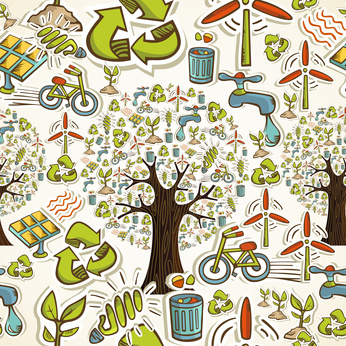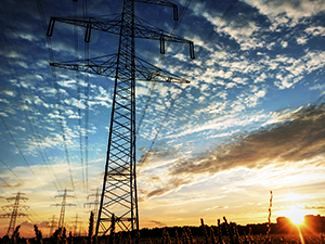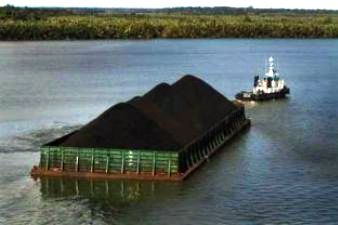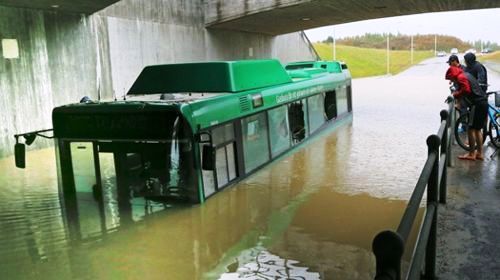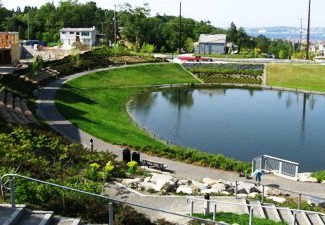 Brussels – The European Commission adopted a new strategy on May 6 for encouraging the use of green infrastructure, and for ensuring that the enhancement of natural processes becomes a systematic part of spatial planning. Green Infrastructure (GI) is a tried and tested tool that uses nature to provide ecological, economic and social benefits. Instead of building flood protection infrastructure, for example, a green infrastructure solution would be to allow a natural wetland to absorb the excess water from heavy rain.
Brussels – The European Commission adopted a new strategy on May 6 for encouraging the use of green infrastructure, and for ensuring that the enhancement of natural processes becomes a systematic part of spatial planning. Green Infrastructure (GI) is a tried and tested tool that uses nature to provide ecological, economic and social benefits. Instead of building flood protection infrastructure, for example, a green infrastructure solution would be to allow a natural wetland to absorb the excess water from heavy rain.
This is a key step in implementing the EU 2020 Biodiversity Strategy and specifically Target 2 that requires that ‘by 2020, ecosystems and their services are maintained and enhanced by establishing green infrastructure and restoring at least 15% of degraded ecosystems’.
Environment Commissioner Janez Potočnik said, “Building green infrastructure is often a good investment for nature, for the economy, and for jobs. We should provide society with solutions that work with nature instead of against it, where that makes economic and environmental sense.”
Green infrastructure is often cheaper and more durable than alternatives provided through conventional civil engineering. Biodiversity-rich parks, green spaces and fresh air-corridors can, for example, mitigate the negative effects of summer heat waves. In addition to the health and environmental benefits, green infrastructure also brings multiple social benefits: it creates jobs and makes cities more appealing places to live and work. And it allows for wildlife to thrive, even in an urban context.
The strategy launched on May 6 will focus on:
- Promoting green infrastructure in the main policy areas such as agriculture, forestry, nature, water, marine and fisheries, regional and cohesion policy, climate change mitigation and adaptation, transport, energy, disaster prevention and land use policies. By the end of 2013, the Commission will develop guidance to show how green infrastructure can be integrated into the implementation of these policies from 2014 to 2020.
- Improving research and data, strengthening the knowledge base and promoting innovative technologies that support green infrastructure.
- Improving access to finance for green infrastructure projects – the Commission will set up an EU financing facility by 2014 together with the European Investment Bank to support green infrastructure projects.
- Supporting EU-level GI projects – by the end of 2015, the Commission will carry out a study to assess the opportunities for developing an EU-wide network of green infrastructure.
Next Steps
By the end of 2017, the Commission will review progress on developing Green Infrastructure and publish a report on the lessons learnt together with recommendations for future action.
Background
Europe’s landscape is dramatically modified every day by fragmentation, change and intensification of land use as a result of a persistent human development. Urban expansion and construction of road and energy infrastructures have degraded and divided valuable ecosystems affecting their habitats and species, and reducing the spatial and functional coherence of the landscape. Degraded ecosystems tend to have lower species richness and are unable to offer the same range of services than healthy ecosystems. These services, however, have direct value for our economy, and investing in green infrastructure, therefore, makes economic sense.
There is usually a high return on green infrastructure investments. In an example of a floodplain restoration project along the river Elbe, Germany, the benefits of shifting dikes, investing in floodplain-adapted agricultural management, and constructing fish ladders outweighed costs by a factor of up to four. Recreation, flood protection and carbon benefits, which were not monetised, would increase the value of these calculated benefits even further.
Green infrastructure urban environmental features like green roofs, parks and greenways contribute to human health, help address social problems, save energy, and ease water run-off. Better infrastructure planning also contributes to more efficient mobility and building-policy.
The Communication on Green Infrastructure draws from the EU’s Resource Efficiency Roadmap and the EU Biodiversity Strategy to 2020, in order to promote investing in and the use of Green Infrastructure in Europe.
Click here for more details:
http://ec.europa.eu/environment/nature/ecosystems/index_en.htm
Source: Europa.

